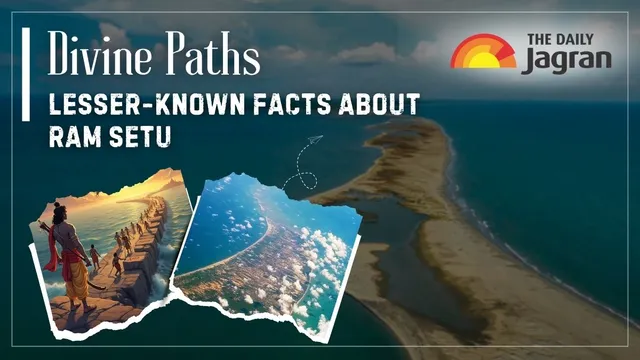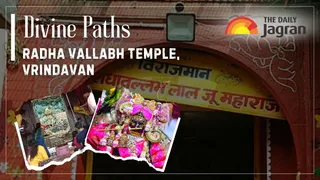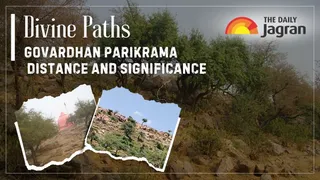- By Kashish Rai
- Thu, 02 Oct 2025 03:46 PM (IST)
- Source:JND
Ram Setu Facts: Ram Setu, often called Adam’s Bridge, is a fascinating chain of limestone shoals stretching about 50 kilometres between India’s southern coast and Sri Lanka’s northern shore. Deeply rooted in Hindu mythology, it is believed to have been built by Lord Rama with the help of his monkey army during the Treta Yuga to rescue Sita from Ravana. While myths place its origin around 7000 years ago, geologists date the sandbar to about 4000 years. This mysterious bridge continues to inspire awe, sparking curiosity, faith, and debate among devotees, historians, and scientists alike, blending spirituality with natural wonder.
In The Daily Jagran’s series Divine Paths, let us uncover some lesser-known facts about the formation and significance of this divine bridge below:
Ram Setu: Lesser-Known Facts About The Formation And Significance Of This Divine Bridge
1. Ancient Ice Age Origins
According to the Indian Council of Historical Research, Ram Setu dates back around 1.7 million years, formed during the last ice age when sea levels were much lower. This fascinating detail connects mythology with deep geological history, making the bridge an extraordinary blend of natural formation and spiritual belief.
2. Submersion By Rising Seas
Around 4,000 years ago, rising sea levels submerged large portions of Ram Setu, according to scientific studies. This natural shift transformed a once-functional pathway into an underwater wonder, which now rests partially hidden beneath the ocean, continuing to spark both devotion and curiosity among believers and researchers worldwide.
Recommended For You
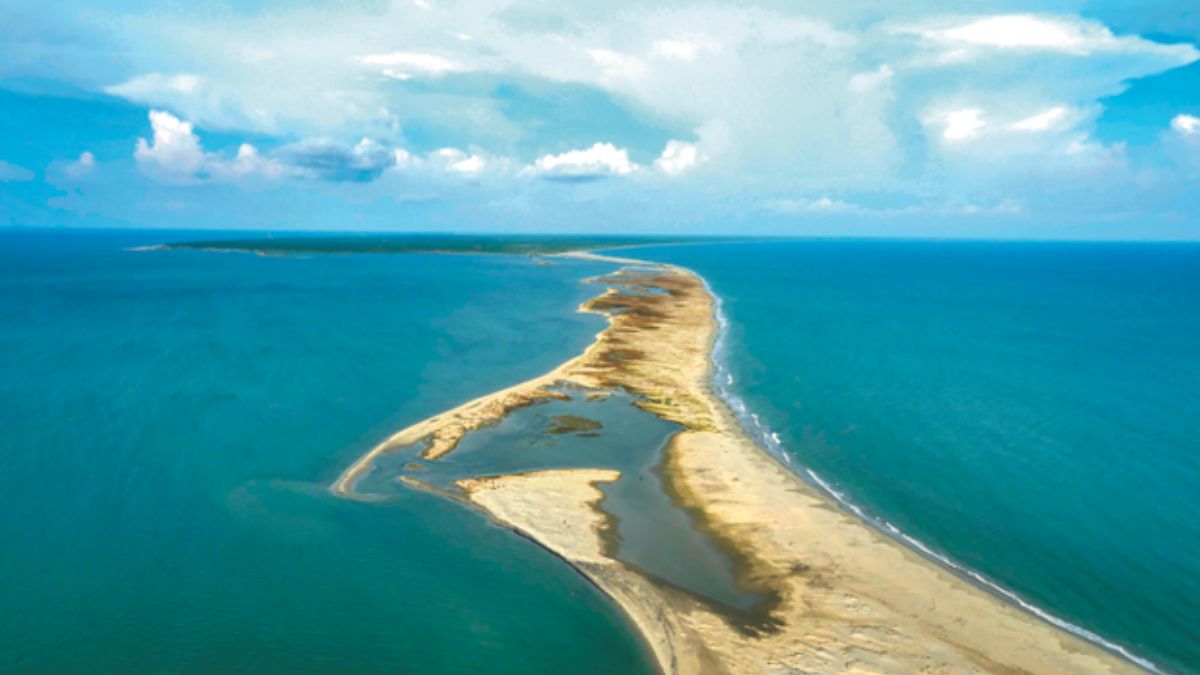
Image of Ram Setu as seen from Talaimannar, Sri Lanka, is the remaining trace of the former Palk Isthmus. (Image Source: Wikimedia Commons)
3. Complex Limestone Structure
Ram Setu is not a simple sandbank, but a remarkably complex structure made of limestone shoals. Some areas are formed from a single stone layer, while others contain multiple stacked layers. This intricate composition fuels debate, as its durability defies centuries of waves, storms, and constant marine erosion.
4. A Blend Of Faith And Science
Science suggests sedimentation and erosion shaped Ram Setu, while mythology claims it was Lord Rama’s divine construction with his vanara sena. This unique interplay of natural processes and faith-filled narratives creates a bridge not just of stone, but also of enduring cultural, religious, and emotional significance.
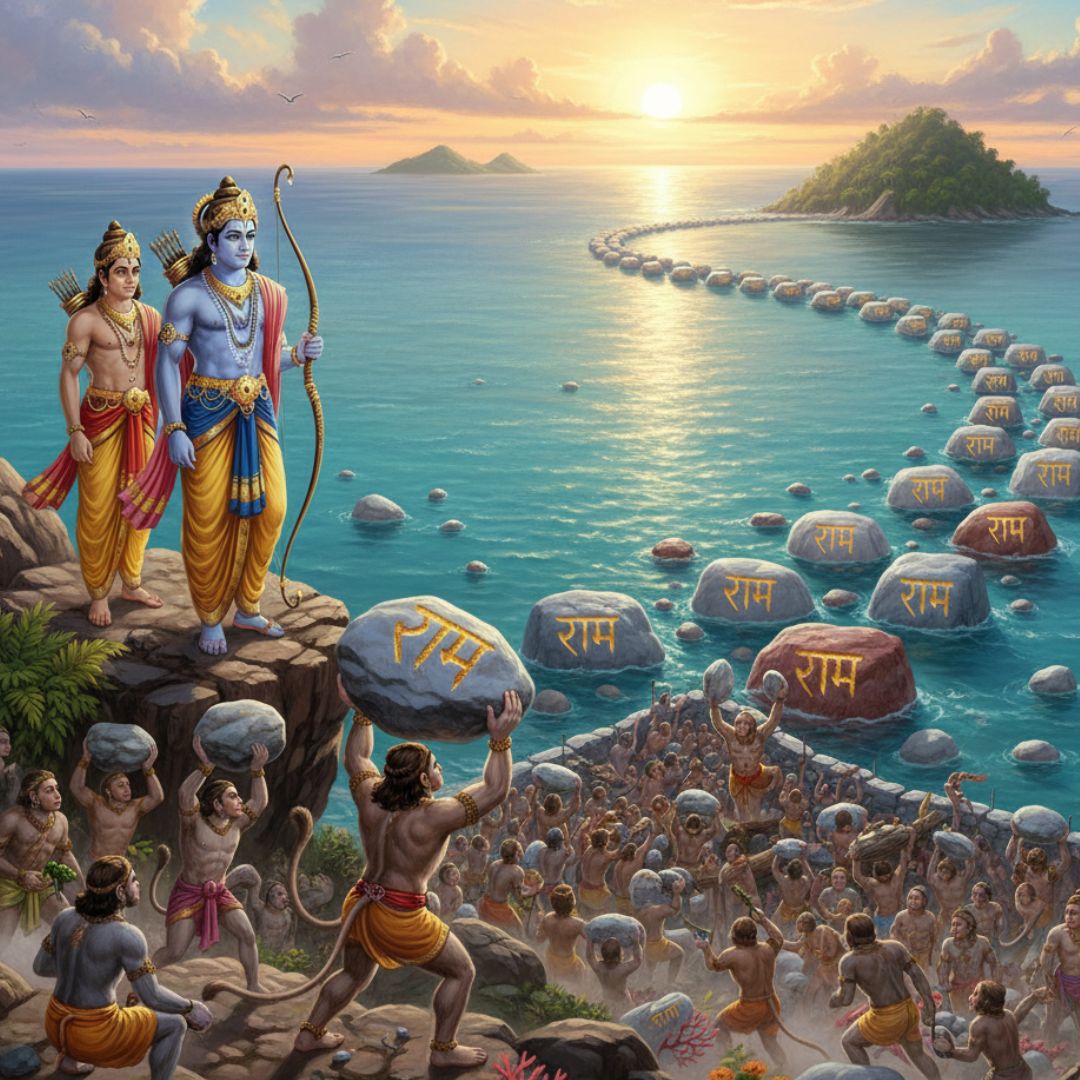
In Hindu mythology, Ram Setu was built by Lord Rama and his monkey army to rescue Sita from the demon king Ravana. (Image Source: Gemini AI)
5. Spiritual And Healing Beliefs
For countless devotees, Ram Setu is more than stone - it is sacred energy. Bathing near its waters is believed to cleanse the soul and heal ailments. Pilgrims consider crossing the bridge, even symbolically, a step towards moksha, highlighting the powerful spiritual aura that surrounds this ancient marvel.
6. Protective And Ecological Role
Beyond mythology, Ram Setu also has ecological significance. The structure is thought to act as a natural barrier, protecting coastal regions from storms and cyclones. This subtle, yet profound role in maintaining environmental balance shows how nature and culture intertwine in shaping the legend of this bridge.
7. A Symbol Of Resistance
Ram Setu has faced controversies, with debates over whether to demolish it for a shipping channel. Yet, many Hindus view it as a national monument and a living symbol of faith, protecting its sanctity with immense devotion. It stands as an emblem of cultural resilience and unity.
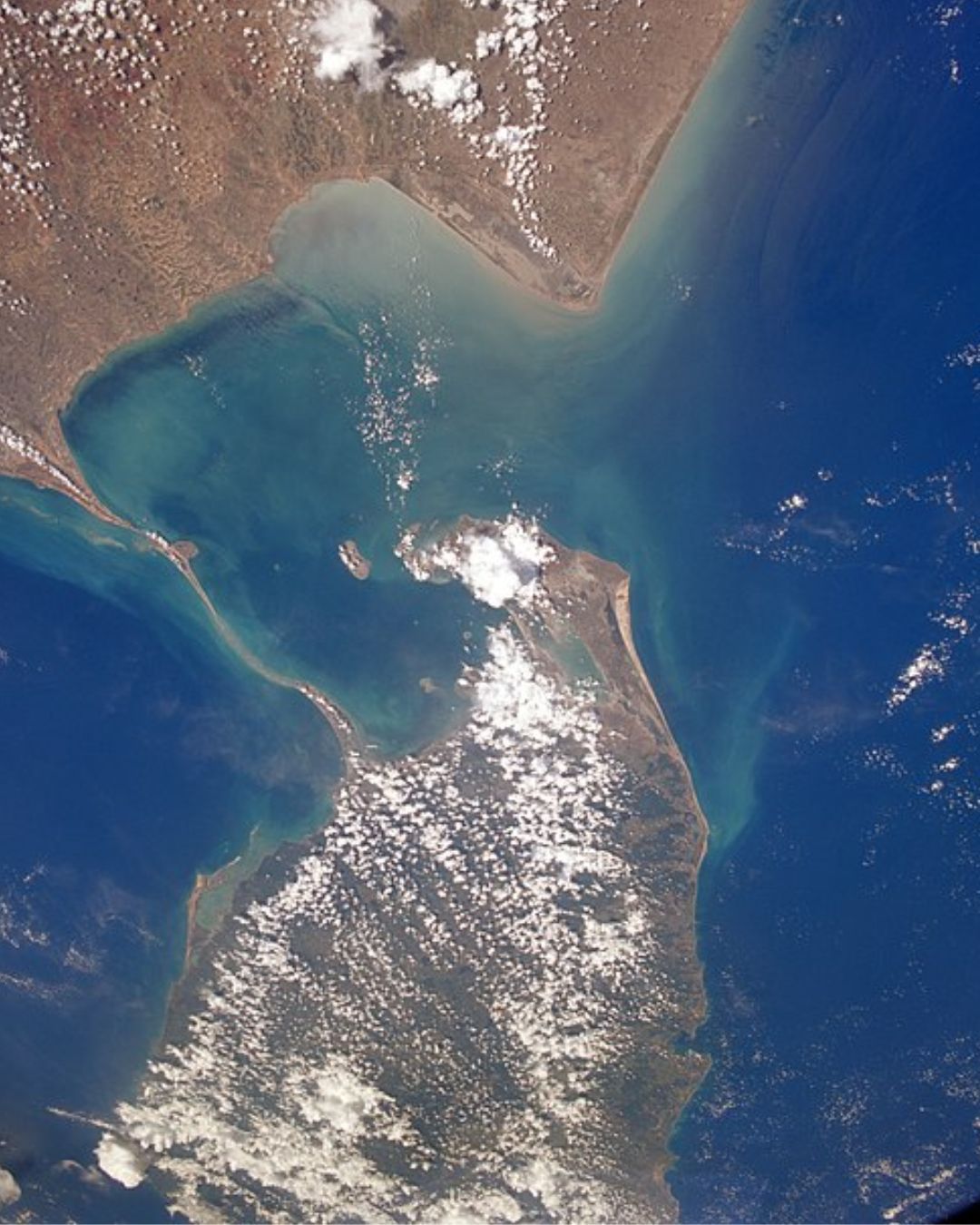
Adam’s Bridge between India and Sri Lanka as seen from the Space Shuttle Endeavour during STS-59. (Image Source: Wikimedia Commons)
8. A Sacred Symbol Of Faith And Identity
For Hindus, Ram Setu is not just a bridge but a living symbol of devotion to Lord Rama. The 2007 shipping canal proposal sparked nationwide protests, as believers saw its demolition as an attack on faith and heritage. Many fear its destruction could invite divine wrath and natural calamities.
Is Ram Setu Visible In The Present Times?
Ram Setu was clearly visible until 1964, but over time it has become submerged beneath the sea. Today, it lies underwater, though NASA satellite images still reveal stones resting on a sandbar in shallow waters, keeping the ancient bridge’s presence alive in people’s minds and beliefs.
ALSO READ: 9 Ancient Hindu Temples In North East India To Visit Once In A Lifetime | Divine Paths
Ram Setu remains an awe-inspiring symbol where faith, history, and nature converge. Whether seen as a divine creation or a natural wonder, it continues to unite devotion and curiosity. Its presence underwater still speaks of resilience, reminding us of India’s timeless heritage, spirituality, and the enduring bond between myth and science.

